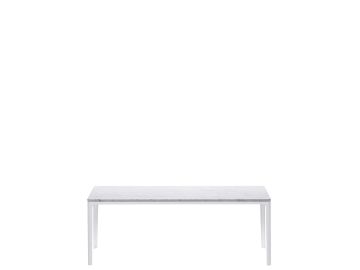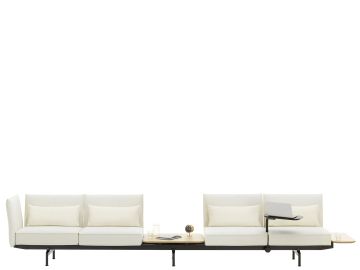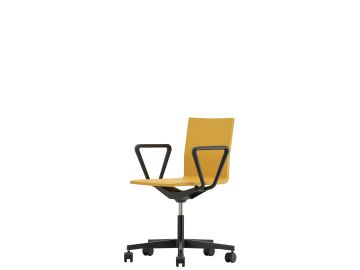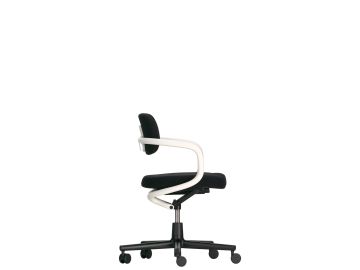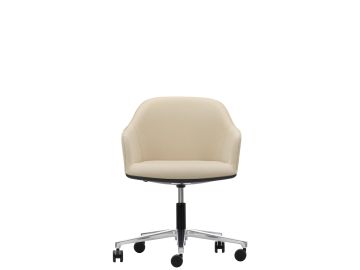ProductsChairsLounge chairsSofasOffice chairsChaises longuesStools & benchesSculpturesConference chairsAirport seatingStorage spaceMicro architectureDining tablesCafé tablesCoffee & side tablesDesksOffice furniture systemsConference systemsLightingClocksDecorative objectsCoat racks & wall shelvesTrays & vesselsNewBestsellerQuickly availableColour & materialAlexander Girard Antonio CitterioBarber OsgerbyCharles & Ray Eames George NelsonHella JongeriusIsamu NoguchiLounge chair finderOffice chair finderGift finderCare & repairSpare partsCare productsManufacturer warrantyVitra Circle StoresVitra Circle for Contract (Business clients)Lounge Chair & OttomanHang it allInspirationsLiving roomDining roomHome OfficeChildren's roomOutdoorHome StoriesAugmented RealityColours & materialsHome SelectionWorkspaceFocusMeetingWorkshopClub OfficeCitizen OfficeStudio OfficeDynamic SpacesHospitalityAirportsEducationCo-WorkingHealthcareOur ClientsDestination WorkplaceA case for classicsOffice chairsDancing OfficeHome StoriesThe Home Selection fabrics from Kvadrat and DedarAugmented Reality - bring Vitra products into your homeSchool of Design: Showcase work and knowledgeA case for classicsColour & materialAn open house An office landscape - without walls or partitionsHigh comfort of low energyA leading space for a leading art collegeServicesCare & repairCare productsManufacturer warrantyFAQ and contactInstructionsConsulting & Planning StudioVitra Circle StoresVitra Circle for Contract (Business clients)Consulting & planning in the VitraHausInstructionsOutdoor care instructionsRepair, maintenance, overhaul at the Vitra Circle Store Campus ProfessionalsCAD dataProduct factsheetsCertificatesSustainability reportInstructionsEcology informationpConPlanning examplesColour & Material LibraryCertificates and standardsHome SelectionTo the dealer loginOur ClientsMyntDestination Workplace: Visit our clients and partnersAnagram SofaMikadoTyde 2 on castorsACXDancing OfficeOffice chairsMagazineStoriesConversationsExhibitionsDesignerProject VitraCatwalk: The Art of the Fashion ShowA Capsule in TimeSeeing the forest for the treesRefining a classicMynt is a lifetime achievement to meA desk like a typefaceV-FoamSculptural IconsGames bring people together – just like good officesLet there be light!Social SeatingJust Do It!EVER GREENWhy the Eames La Fonda Chair was designedWhen a Sofa is more than just a Sofa: Anagram100% virgin wool – 100% recyclableAn archive is like a time capsuleVitraHaus Loft - A conversation with Sabine MarcelisA 1000 m2 piece of furnitureFrom a toy to an objectThe Eames Collection at the Vitra Design MuseumAbout the partnership between Eames and VitraVitra CampusExhibitionsGuided tours & workshopsFood and drinkShoppingActivities for familiesArchitectureYour eventConsulting & planning in the VitraHausPlan your visitVitra Campus appCampus EventsNewsVitraHausVitra Design MuseumVitra SchaudepotVitra Circle Store CampusOudolf GartenAbout VitraSustainabilityJobs & CareersDesign processThe Original is by VitraHistory - Project Vitra
Kadokawa Corporation
Tokorozawa, Japan

Headquartered in Tokyo, the Japanese publishing company Kadokawa Corporation recently completed a new campus in Tokorozawa, a city about 50 kilometres northwest of the capital. The multi-purpose campus is part of Tokorozawa Sakura Town – a cultural complex that is home to the Kadokawa Musashino Museum, a book manufacturing and distribution factory, an event space, hotel, and more. But one of the most important elements of the complex is Kadokawa’s newest office space, a project helmed by Yumika Yoshida, Design Director of the studio FLOOAT.
Having evolved from a traditional publishing house to an entertainment company, Kadokawa understood the need to overhaul traditional notions associated with the word ‘office’. Here, Yumika Yoshida reflects on the process of creating its dynamic office space with 2,000 workstations spread across an undivided 9,000 square metres, which officially opened in November 2020.
Having evolved from a traditional publishing house to an entertainment company, Kadokawa understood the need to overhaul traditional notions associated with the word ‘office’. Here, Yumika Yoshida reflects on the process of creating its dynamic office space with 2,000 workstations spread across an undivided 9,000 square metres, which officially opened in November 2020.
Architecture
FLOOATInterior architecture
FLOOAT, Okamura, Suppose Design Office Photographer
Tomooki Tengaku
FLOOATInterior architecture
FLOOAT, Okamura, Suppose Design Office Photographer
Tomooki Tengaku
How did you approach the concept of an office for Kadokawa? What did the project require?
The project required us to address not only a variety of workstyles but also the diversity of the facility in which the office is housed, which includes a museum, theatre, factory, restaurant, etc. We regarded the entire installation as a large workspace, and we wanted to connect and contribute to the local community. So, we designed a new work environment for Kadokawa that seamlessly connects creativity across departmental and spatial boundaries.
You refer to the work environment as a ‘fluctuating landscape’. What do you understand by this term?
Just as local cultures are influenced by different climates, we thought about what it would be like to create an office that expresses Kadokawa’s culture through the harmonisation of multiple workspaces. We regarded the vast space as a single topography, and then created an open office environment with various, scattered workspaces that are seamlessly linked so people can sense each other. We think an important element of open office environments is to establish appropriate distances, where people can sense the presence and energy of others, even if they are elsewhere. So, we deliberately avoided the use of physical walls or partitions in order to create an open atmosphere and encourage a more positive feeling among workers.
What about conference rooms or other typically closed spaces?
We wanted the office environment to encourage people’s actions naturally and also allow people to subconsciously choose the area they felt was best suited to them. We also considered how each space impacts mental well-being, which is why we didn’t create any large conference rooms. Instead we opted for a number of flexible zones for teamwork, townhall meetings, presentations, etc. It’s important to have environments that can be easily adapted according to different needs.
The project required us to address not only a variety of workstyles but also the diversity of the facility in which the office is housed, which includes a museum, theatre, factory, restaurant, etc. We regarded the entire installation as a large workspace, and we wanted to connect and contribute to the local community. So, we designed a new work environment for Kadokawa that seamlessly connects creativity across departmental and spatial boundaries.
You refer to the work environment as a ‘fluctuating landscape’. What do you understand by this term?
Just as local cultures are influenced by different climates, we thought about what it would be like to create an office that expresses Kadokawa’s culture through the harmonisation of multiple workspaces. We regarded the vast space as a single topography, and then created an open office environment with various, scattered workspaces that are seamlessly linked so people can sense each other. We think an important element of open office environments is to establish appropriate distances, where people can sense the presence and energy of others, even if they are elsewhere. So, we deliberately avoided the use of physical walls or partitions in order to create an open atmosphere and encourage a more positive feeling among workers.
What about conference rooms or other typically closed spaces?
We wanted the office environment to encourage people’s actions naturally and also allow people to subconsciously choose the area they felt was best suited to them. We also considered how each space impacts mental well-being, which is why we didn’t create any large conference rooms. Instead we opted for a number of flexible zones for teamwork, townhall meetings, presentations, etc. It’s important to have environments that can be easily adapted according to different needs.
‘We had to rethink the meaning of the word ‘office’ because the pandemic occurred before the project was completed. This gave us time to reformulate and implement new workstyles, so employees could easily adapt to the new office environment.’
Yumika Yoshida, Design Director FLOOAT
So how did you divide these different areas without walls or partitions?
We created workspaces of different heights so everyone can work according to their own sensibilities. For example, we used low ceilings for focus zones and high ceilings in more communicative spaces. Four areas we called MORI (‘forest‘) are designed specifically for concentration: they have raised floors and partially raised ceilings; being on one of these platforms gives you the feeling of looking out over the surrounding terrain from the top of a hill. Also, the materials used in the section between these different areas are not homogenous Instead they provide a natural feel. They help create a place for a ‘comfortable pause’, in which to unwind and relax.
We created workspaces of different heights so everyone can work according to their own sensibilities. For example, we used low ceilings for focus zones and high ceilings in more communicative spaces. Four areas we called MORI (‘forest‘) are designed specifically for concentration: they have raised floors and partially raised ceilings; being on one of these platforms gives you the feeling of looking out over the surrounding terrain from the top of a hill. Also, the materials used in the section between these different areas are not homogenous Instead they provide a natural feel. They help create a place for a ‘comfortable pause’, in which to unwind and relax.

Why do you think it is important to never fully divide such a large space?
In an office that has a cooped-up feeling, it tends to become more difficult to have open communication channels. But in today’s offices, it is essential to encourage communication more actively and trigger new ideas.
Why did you choose Vitra as a partner when it came to furnishing the office?
We were looking for functional and open-ended products that can be used for diverse working styles. By selecting Vitra products, we were able to convey the meaning of individual spaces without words. Additionally, when we were contemplating how to harmonise materials with the surrounding abundance of vegetation, we realised that Vitra fabric was ideal, because it expresses subtle nuances that textiles from other brands don’t.
In an office that has a cooped-up feeling, it tends to become more difficult to have open communication channels. But in today’s offices, it is essential to encourage communication more actively and trigger new ideas.
Why did you choose Vitra as a partner when it came to furnishing the office?
We were looking for functional and open-ended products that can be used for diverse working styles. By selecting Vitra products, we were able to convey the meaning of individual spaces without words. Additionally, when we were contemplating how to harmonise materials with the surrounding abundance of vegetation, we realised that Vitra fabric was ideal, because it expresses subtle nuances that textiles from other brands don’t.
